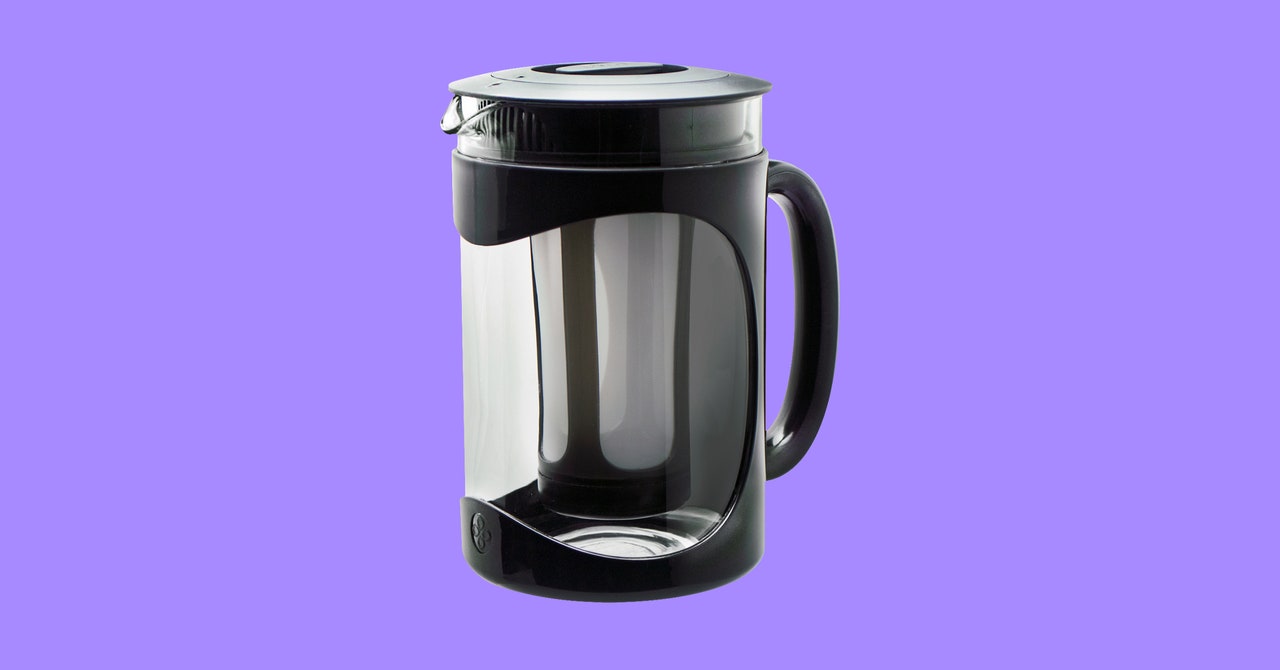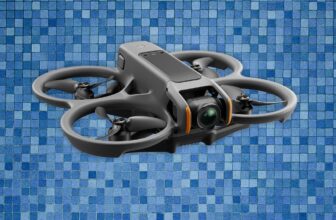
After sitting on the counter for 12 to 24 hours, you flip a swap and your brew cleanly drains into the decanter. It additionally comes with a measuring lid. Maybe most vital, the espresso it makes is implausible.
Finest Gradual Drip Chilly Brew (Grit-Free)
The Bruer opened my eyes to slow-drip chilly brewing. I had hassle with the “Gosh! Dripo” slow-drip chilly brewer (see the Not Really helpful part under), however the Bruer turned me round. It makes a pleasant, concentrated, nearly grit free chilly brew.
As a substitute of pouring a bunch of grounds into water and letting it sit, the Bruer lets water drip by means of the grounds utilizing gravity. It appears a bit of bananas at first, however it’s easy. You fill the underside of a glass container with coarse espresso grounds. Under the grounds is a metal mesh filter. After you dampen these grounds, put a paper filter on prime, snap within the silicone seal, and place the container into the glass carafe. Replenish the highest part with water and ice, then twist the knob within the heart to sluggish or pace up the drip—you need a drop per second—as wanted.
It is not foolproof. You need to comply with the instructions exactly, together with utilizing ice—and in case your espresso grind is just too high-quality, water might type pathways by means of it, like an ant colony. If what’s dripping out would not look darkish, or it is popping out shortly, modify your techniques. It additionally solely holds 20 ounces of water, and because it’s manufactured from glass, it is fragile. Some patrons have complained of drip valve points, however I’ve not encountered any but.
Finest Designed Chilly Brewer (Classiest)
KitchenAid would not make the very best chilly brew I’ve had, however extra care went into its design than virtually another pot I’ve listed. It is manufactured from metal and thick glass, with a built-in deal with and a spigot for dishing out chilly brew—excellent when you have a shelf to set it on, in or out of the fridge. (There’s additionally an XL version that holds 40-ish ounces of espresso and has a stand to sit down on the countertop.
It has a chrome steel grounds tray (with a deal with!) that you simply set within the bigger glass container. Dampen your grounds, then fill it with water. It says it holds 28 ounces, however I simply match 32. Let it sit for a minimum of 12 hours, as standard (24 when you fridge it), and also you’re good to go. The metal filter is just too porous and does let loads of sediment by means of, however KitchenAid neatly has a textured backside that lets the grit decide on the edges of the underside. It would not appear to return by means of the spigot, so after my first gritty glass, the espresso was quite a bit smoother, and fairly wealthy.
I have never had any points, however a couple of customers have reported the spigot leaking.
Finest for Brewing Giant Batches
County Line Kitchen is a family-owned enterprise in Wisconsin. Its Chilly Brew Maker makes use of a trusty ol’ 2-quart mason jar and stainless-steel filter basket to brew. It really works very similar to the Espresso Gator, however you may make a ton of joe with it. You fill the basket with loads of espresso grounds, pour as much as 64 ounces of chilly water by means of it slowly, and let it sit for twenty-four hours. When it’s completed, take out the filter basket and use the lid to pour.
In my assessments, the County Line produced comparatively easy cold-brewed espresso, although it was considerably gritty, seemingly as a result of the metal filter is a bit too porous (use coarse grounds). The directions additionally inform you to shake the jar after including water, however I discovered {that a} little bit of espresso can leak out even when it’s sealed tight, which appears to be a standard mason jar downside. Lingering grounds apart, if you would like sufficient chilly brew to final per week, this can be a good solution to get it.
Basic, Tasty Chilly Brew
The Toddy has been round because the Nineteen Sixties. It’s just like the Oxo brewing system, just a bit extra DIY.
It’s mainly a giant bucket with grounds in it, and a glass carafe to carry the espresso when it is completed brewing. The brew bucket is manufactured from plastic, and it requires paper liners and filter pads that you simply’ll should maintain shopping for (filter pads final about 10 brews, or 3 months). You must take away a rubber stopper to empty the espresso after 24 hours, which can at all times get your palms messy—cleanup is time-consuming.







